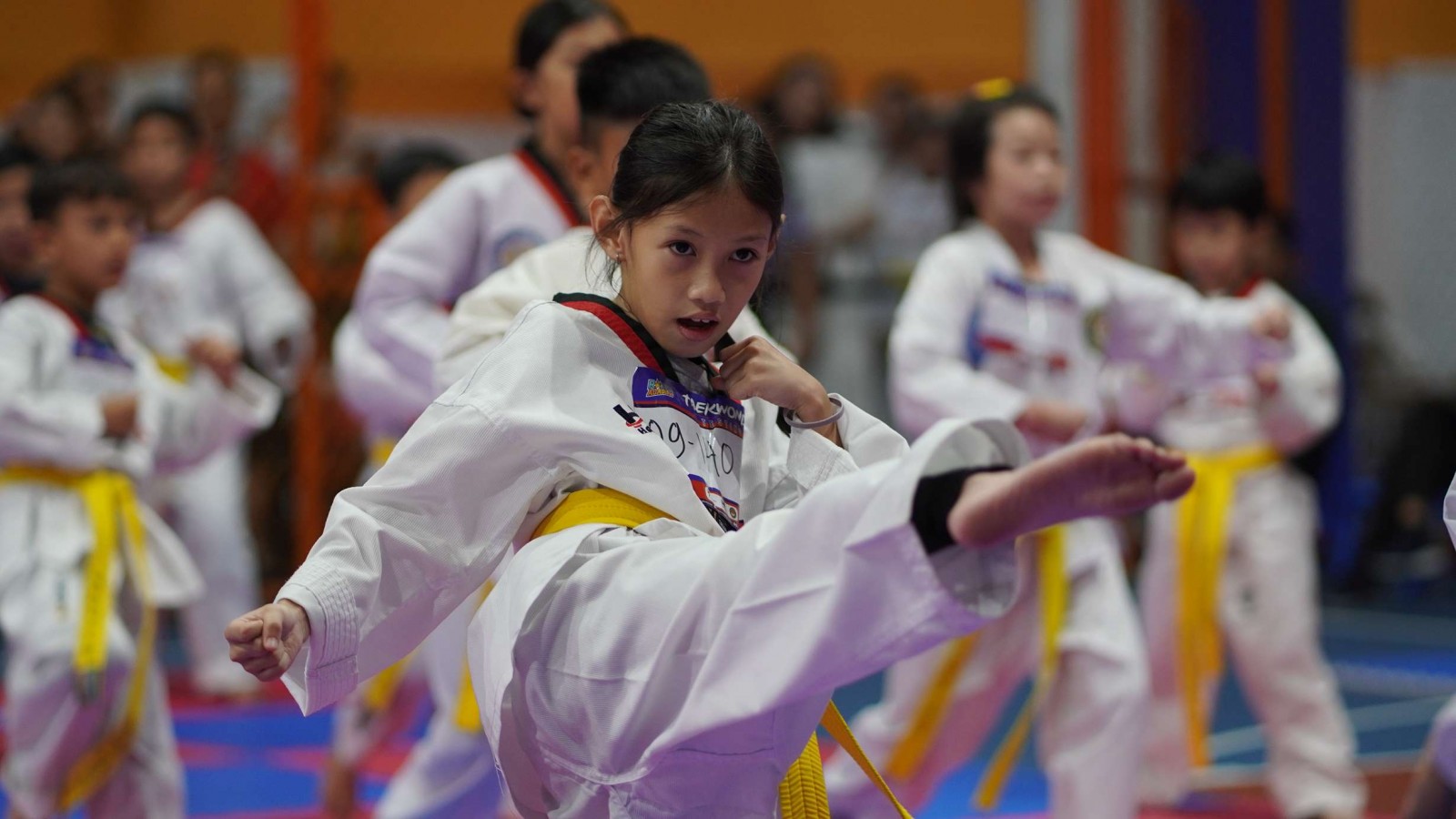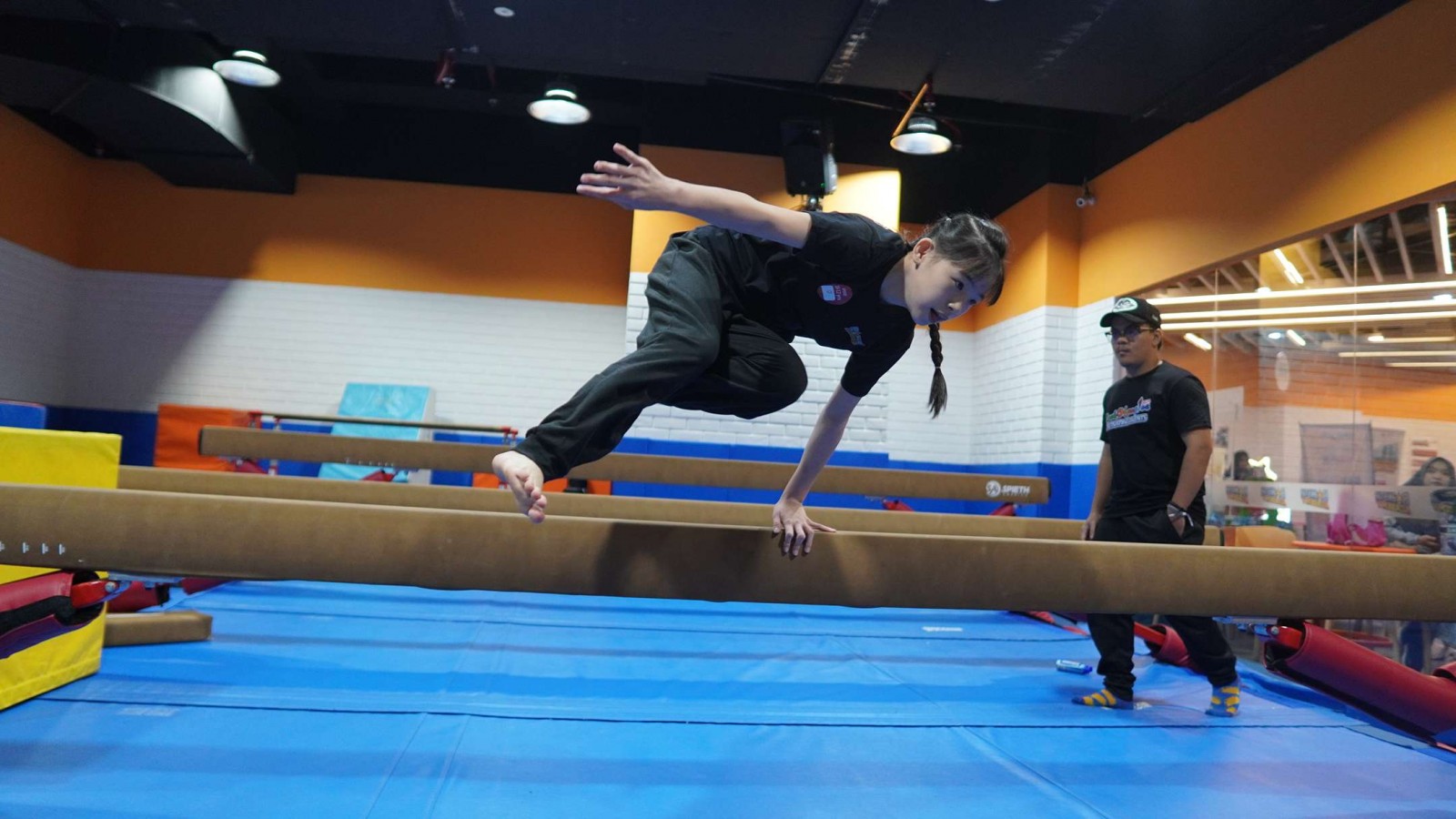Lists of Taekwondo Kicks Moves You Have to Learn

Taekwondo kicks are the rockstars of martial arts—powerful, dynamic, and seriously cool to watch. In this guide, we’ll walk you through the essential and advanced Taekwondo kicks you need to know to kick like a pro. Let’s get started!
Lists of Taekwondo Kicks Moves You Have to Learn
From basic front kicks to jaw-dropping spinning moves, these kicks are not just practical for self-defense but also a showstopper in any competition.
Yet, many people dream of mastering these iconic moves but don’t know where to start. Don’t worry, we’ve got your back!
1. The Front Kick (Ap Chagi)
The Front Kick is a foundational move in Taekwondo, known for its speed and power, often referred to as the "snap kick." To perform this kick, raise your knee to waist height, then extend your leg forcefully, driving your foot straight towards the target.
The impact of this kick is meant to push the target backward, creating distance, or even causing injury. It’s one of the first kicks learned by Taekwondo practitioners and remains one of the most powerful throughout their training.
2. The Side Kick (Yeop Chagi)
The Side Kick is a versatile and powerful technique commonly learned early in Taekwondo. To perform it, raise your knee, rotate your torso 90 degrees, and then extend your leg towards the target.
The force of the kick is generated from the waist and torso, allowing for a powerful strike. Depending on the style, the target may be struck with the outside edge of the foot or the heel.
This kick is particularly effective in self-defense situations, as it can create a strong barrier or disable an opponent.
3. The Roundhouse Kick (Dollyeo Chagi)
One of the most iconic and dynamic kicks in Taekwondo, the Roundhouse Kick is executed by pivoting on the non-kicking leg and rotating the hips. As you rotate, extend your kicking leg and strike the target with the ball or instep of your foot.
This kick is highly effective for striking opponents from the side, delivering powerful hits to the head or torso. Once mastered, it becomes a versatile tool in both offense and defense which is frequently seen in competitive sparring and demonstrations.
4. The Back Kick (Dwit Chagi)
The Back Kick is an advanced Taekwondo move which requires the practitioner to strike while facing away from the target. To perform it, turn your body, looking over your shoulder, and extend your kicking leg behind you while keeping it straight.
The kick is aimed directly at the target with the heel. Mastering balance and control is crucial for this move, as improper technique can lead to losing balance or missing the target. It’s a highly effective kick when countering an opponent from behind.
5. The Reverse Side Kick (Bandae Yeop Chagi)
The Reverse Side Kick is an exaggerated variation of the back kick. In this move, the practitioner turns their body further than with the standard back kick, creating additional momentum and power.
To execute it, rotate more deeply and extend your leg sideways, ensuring your heel makes contact with the target. This kick requires excellent control to maintain balance while generating maximum force, and it’s often used in advanced sparring and demonstrations.
6. The Inner Crescent Kick (An Chagi)
The Inner Crescent Kick involves a sweeping motion of the leg from the outside of the body to the inside, across the centerline.
To execute this kick, raise your leg high and swing it inward, aiming to make contact with the target using the inside of your foot.
The inner crescent kick is effective in striking an opponent at an angle, especially when they are attempting to block or counter. This kick requires flexibility and control, as well as the ability to generate power while maintaining balance.
7. The Outer Crescent Kick (Bakkat Chagi)
The Outer Crescent Kick is the opposite of the inner crescent kick, sweeping the leg outward across the centerline. To perform it, raise your leg high and extend it outward from your body, then sweep it around in a circular motion to strike the target.
This kick is typically aimed at the head or upper body of the opponent and can be effective for deflecting an opponent's defenses or catching them off guard. Like the inner crescent, it requires good flexibility and precise technique.
8. The Hook Kick (Huryeo Chagi)
The Hook Kick is similar to the Roundhouse Kick but with an added backward sweep once the foot extends. The goal is to strike the target with the heel after the kick has swept through the air.
This kick is particularly effective when targeting the opponent’s head or upper body, and although it is more modern, it is becoming increasingly popular in competitions. The hook kick requires great flexibility and control to execute properly.
9. Reverse Turning Kick (Bandae Dollyeo Chagi)
The Reverse Turning Kick is similar to the Hook Kick but with a more pronounced sweep. In this move, the practitioner executes a turning motion while keeping their leg straight, making contact with the target using the heel.
The kick is executed with greater momentum than the standard turning kick, and the extended leg creates a larger sweeping motion. This kick requires precision and balance, as improper technique can lead to loss of power or control.
10. The Axe Kick (Naeryeo Chagi)
The Axe Kick is a powerful downward strike, often used to target the head or shoulders of the opponent.
To perform this move, raise your leg high above your head, then bring it down in a controlled, downward motion. The impact is made with the heel of the foot.
The Axe Kick mimics the action of swinging an axe, and its devastating power can be used to break through an opponent’s defense. It is often seen in demonstrations and kyorugi (taekwondo sparring).
11. The Knee Strike (Mureup Chigi)
Although not technically a kick, the Knee Strike is an essential technique in Taekwondo. This strike involves raising the knee and driving it toward the target, either pushing the target into the knee or bringing the knee to the target.
Knee strikes are particularly effective in close combat and self-defense situations, where other kicks might not be as feasible.
In martial arts like Muay Thai and MMA, the knee strike is often used in combination with other techniques to overpower opponents.
12. The Scissor Kick (Kawi Chagi)
The Scissor Kick is an advanced Taekwondo move, often used in demonstrations rather than in competitions or self-defense. To perform the Scissor Kick, jump and use both legs to strike two separate targets at once.
This spectacular move involves powerful coordination and timing, as both legs must move simultaneously to target each opponent. While it’s difficult to master, it’s an impressive display of skill when executed correctly.
13. The Flying Side Kick (Twi Myo Yeop Chagi)
The Flying Side Kick is an advanced and dramatic technique where the practitioner launches into the air and performs a side kick while mid-flight.
To execute this kick, you first take a running start or jump to gain height, then rotate your body in the air and extend your leg into a side kick. The flying side kick is effective for striking opponents from a distance or bypassing their defenses.
It requires exceptional coordination, strength, and timing to land the kick with precision. Although commonly used in demonstrations, it is also utilized in sparring for its surprise factor.
14. The Flying Back Kick (Twi Myo Dwi Chagi)
The Flying Back Kick is similar to the flying side kick but focuses on delivering a powerful back kick in mid-air. To perform this kick, you begin by running or jumping to gain height, then turn your body as you leap into the air.
While in the air, execute a back kick, aiming to strike your opponent with the heel. The flying back kick is powerful and can be used to surprise opponents, especially those who are not expecting an aerial attack.
Like the flying side kick, it requires great timing, strength, and body control to execute correctly.
Ready to Master Powerful Taekwondo Kicks?
Mastering taekwondo kicks is not only essential for advancing in this martial art but also a rewarding way to enhance your agility, strength, and precision. Keep practicing, maintain focus, and enjoy the art of perfecting every movement.
At Rockstar Academy, our martial arts program is designed to help you unlock your full potential, whether you're just starting out or looking to perfect your skills. With expert instructors and a structured curriculum, we provide a supportive environment for students to grow in both technique and confidence.
Our Taekwondo classes focus on building strength, discipline, and agility, preparing students for events and competitions like the prestigious Taekwondo Testing and RockOlympics.
Join our community at Sports & Performing Arts Academy and experience the thrill of martial arts. Plus, don’t miss the opportunity to try it out with a free trial of our Taekwondo program today!
FAQ
How many types of kicks are there in Taekwondo?
There are numerous types of kicks in Taekwondo, with the most common being around 14, including the front kick, side kick, roundhouse kick, and more.
What is the easiest kick in Taekwondo?
The front kick (Ap Chagi) is often considered the easiest, as it involves a straightforward motion of raising the knee and extending the foot toward the target.



